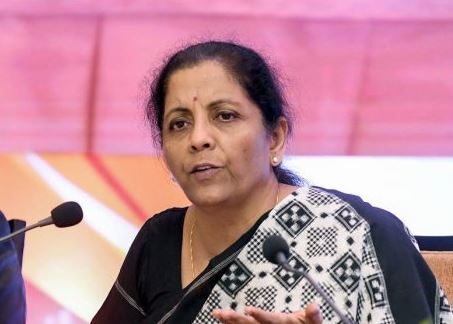(EAS Sarma)
Articles 21 and 41 of the Constitution cast an obligation on the State to ensure that the aged and other vulnerable sections of the citizens are provided adequate assistance to be able to live in dignity. Right to adequate old-age pension is one of the basic universal and justiciable economic rights.
In your 2020 Budget speech, you had rightly announced that “this vibrant India shall be a caring society which shall attend to its weak, the old and the vulnerable among its citizens“. As a welfare state, the Centre has the responsibility to translate this intention into a meaningful scheme in consultation with the States. This assumes utmost importance in the context of the Corona crisis that has adversely affected such sections of the people and, in particular, the aged persons who are highly vulnerable to the virus.

Under the National Social Assistance Programme (NSAP), there are three Central schemes to provide monthly pensions to the aged, the disabled and the widowed women who live below the poverty line. According to the reply given on 17-3-20 by the Minister of Rural Development in response to a Parliament Question (No.3684) informed the Lok Sabha (copy enclosed) that the monthly pension rates are Rs 200 for the beneficiaries of ages up to 80 years and Rs 500 in excess of 80 years.
In addition to the pension benefits under these three NSAP schemes, the States also contribute varying amounts, depending on their respective financial capabilities. It is the cumulative amount that determines the actual pension benefit accruing to pensioners in different States.
By any stretch of logic, these amounts cannot cover the cost of living and the increasing health costs that such persons are required to bear.
In their report for 2013-14, the Estimates Committee of the 15th Lok Sabha (enclosed) observed as follows.
“Rs 200 is given as pension under Indira Gandhi National Old Age Pension Scheme (IGNOAPS) for those in the age group of 60-79 and Rs 500 for those 80 years and above of age; Rs 300 is given under Indira Gandhi National Disability Pension Scheme (IGNDPS) for those between 18 and 79 years of age and Rs 300 under Indira Gandhi National Widow Pension Scheme (IGNWPS) for widows between 40 and 79 years of age. The Committee feels that the current level of pension under IGNOAPS is too small and inadequate”.

The National Policy for Senior Citizens (2011) recommended that the monthly pension for the aged under IGNOAPS should be enhanced to Rs 1000 subject to “revision at regular intervals to prevent its deflation due to higher cost of purchasing“. A copy of the relevant report is enclosed.
From the point of view of the beneficiaries, it is imperative that the Centre and the States together evolve a basis for a minimum monthly rate of pension, linked to the cost of living, that enables the pensioners to live in dignity. Based on that, the Centre should evolve a formula for the apportionment of the cost between the Centre and the States. In the case of the financially weaker States, the Centre may have to bear a greater cost burden. This is necessary for putting in place a social security cover adequate to meet the needs of the aged and the other vulnerable sections.
Economists have estimated that a minimum of Rs 2000 per month of non-contributory pension (as in February 2019), linked to the cost of living, would be necessary to enable a pensioner to lead his/her life with dignity.
I may mention in this context that the public expenditures on pensions for the aged range from less than 2% of GDP in low-income countries to 11% of GDP in higher-income Western Europe. The global average is around 3.3% of GDP. India stands below the global average.
I earnestly appeal to you to take a decision urgently on enhancing the monthly pension rate to the aged so as to ensure that the aged BPL pensioners and the other vulnerable citizens receive not less than Rs 2000 per month. Such a social security cover is a necessity in a welfare-oriented society.
(text of the letter Dr EAS Sarma has written to Union Finance Minister Smt Nirmala Sitharaman on Sept 24,2020)